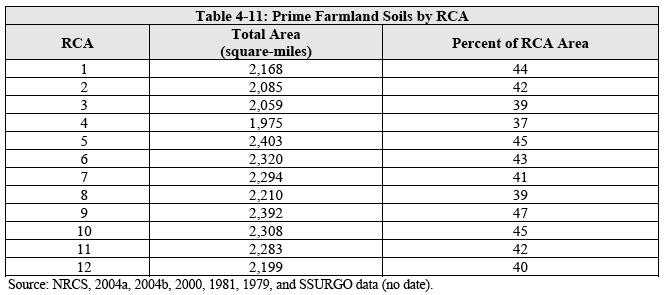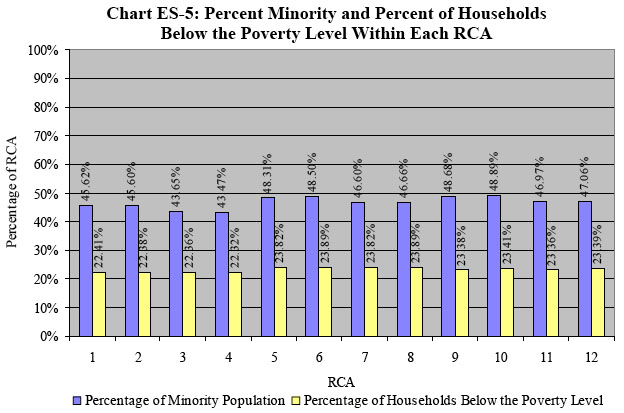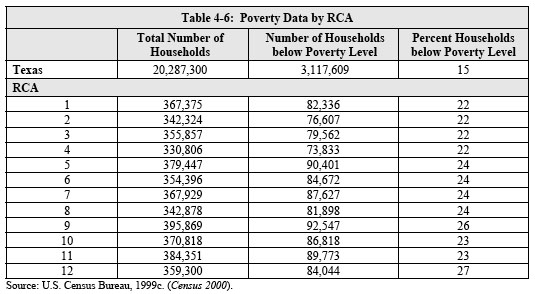| Richard D. Vogel, “NAFTA Corridors: Dividing the Nation to Multiply Profits” (MRZine, 4 February 2006) |
As required by law, the State of Texas has finally posted the long anticipated 4,000-page draft environmental impact statement for the Texas leg of the I-35 NAFTA corridor on the Internet. Access to the document is limited by the digital divide: “Copies of the DEIS will soon be available at public libraries in the study area and TxDOT district and area offices. A complete list of these locations will be available soon.”
What state officials don’t want to publicize widely is instructive:
- The 512-mile I-35 corridor will bisect the state from the Red River in North Texas to Laredo on the Mexican border with a toll highway-rail-utility corridor that will be 1,200 feet wide in some areas and will consume more than 2,400 square miles of irreplaceable prime farmland. The Texas Farm Bureau vehemently opposes the corridor, but state officials, dancing to the tune of finance capital, are not listening to the farmers.
“Prime farmland soils comprise 37-47 percent of each RCA [Reasonable Corridor Alternative]” (U.S. Department of Transportation, Federal Highway Administration, and Texas Department of Transportation, Trans-Texas Corridor-35 Tier One Draft Environmental Impact Statement, Chapter 4, p. 4-30, April 2006).
- This corridor could displace as many as 1 million Texas residents. About half of those in the path of this mammoth project are minorities and nearly a quarter of them live below the poverty level. State officials, working hand-in-hand with land speculators and developers, have expressed no concern for these people. Under new provisions of state law passed to facilitate the project, most of these residents will not even know that they have been targeted until 24 hours before they are evicted.
Click on the chart for a larger view.
U.S. Department of Transportation, Federal Highway Administration, and Texas Department of Transportation, Trans-Texas Corridor-35 Tier One Draft Environmental Impact Statement, Executive Summary, p. ES-20.“As shown in Table 4-6, 15 percent of households in the State of Texas lived below the poverty level in 1999, the year the census data were collected. All RCAs [Reasonable Corridor Alternatives] have higher poverty rate than the State average. . . . The percentage of households below the poverty level in the RCAs ranged from 22-27 percent” (U.S. Department of Transportation, Federal Highway Administration, and Texas Department of Transportation, Trans-Texas Corridor-35 Tier One Draft Environmental Impact Statement, Chapter 4, p. 4-13, April 2006).
- The volume and speed of traffic on the new corridor will produce unprecedented concentrations of air, sound, and water pollution. Promoters of the project have apparently written off the ecological destruction of communities adjacent to the corridor as collateral damage.
- This transportation corridor will significantly increase environmental pressure on local flora and fauna along the route. Specifically, the report identifies 46 threatened plant and animal species that could be negatively affected. Several environmental groups oppose the corridor project, but their voice is not loud enough to be heard above the clamor for profits.
Click on the chart for a larger view.
U.S. Department of Transportation, Federal Highway Administration, and Texas Department of Transportation, Trans-Texas Corridor-35 Tier One Draft Environmental Impact Statement, Executive Summary, p. ES-40. - The corridor will also consume undeveloped public land, already a rare commodity in Texas. Specifically, the report cites thirteen square miles of Texas state parks that will be sacrificed to the project. Like the farmers and environmentalists, the voices calling out to protect public lands are being ignored.
|
“RECOMMENDED PREFERRED ALTERNATIVE” AND “REASONABLE CORRIDOR ALTERNATIVES” Click on the map for a larger view. 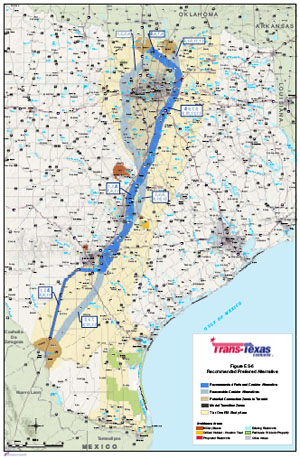 U.S. Department of Transportation, Federal Highway Administration, and Texas Department of Transportation, Trans-Texas Corridor-35 Tier One Draft Environmental Impact Statement, Executive Summary, p. ES-54. N.B. Despite its title, the “Draft Environmental Impact Statement” selected its “Recommended Preferred Alternative” based on “transportation criteria”: “environmental resources were not used as a basis for identifying the Preferred Alternative” (see the section titled “Identification of the Preferred Alternative” on p. 2-17).
|
The I-35 corridor is the first leg of the NAFTA corridor system that is being built to bypass West Coast labor unions and sustain the flood of cheap imports from the Far Eastern Pacific Rim flowing to the heartland of America (for an in-depth analysis, see “The NAFTA Corridors: Offshoring U.S. Transportation Jobs to Mexico,” Monthly Review, February 2006).
The human and environmental costs of the Texas leg of the I-35 NAFTA corridor cannot be kept secret indefinitely. The final toll of the damage caused by the NAFTA corridor system, which will entail more lost jobs, the increased use of fossil fuels, and continuing dependence on imported oil, will also include mass consumption of prime farmlands, displaced populations, disrupted communities, and widespread environmental damage. The project is gathering momentum and could become a fait accompli unless confronted by organized resistance. Take action at www.corridorwatch.org.
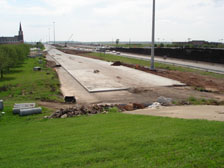 |
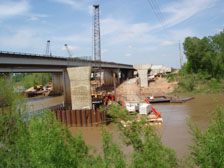 |
Download a PDF version of “NAFTA Corridor Update.”
Richard D. Vogel is an independent socialist writer. He has recently completed a book, Stolen Birthright: The U.S. Conquest and Exploitation of the Mexican People.

